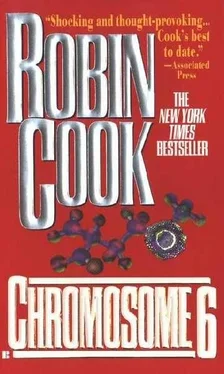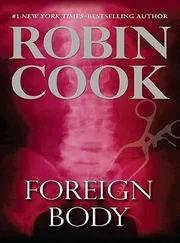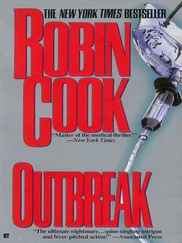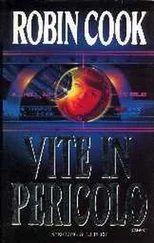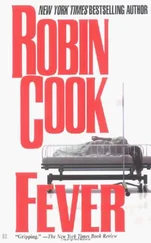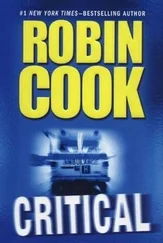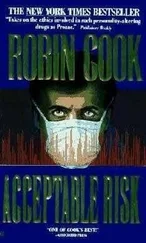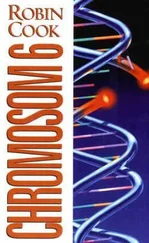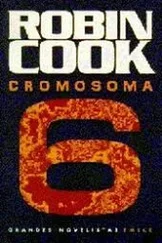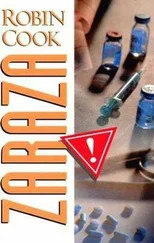“Excuse me?” Kevin said. The woman looked familiar, but he couldn’t place her.
“You haven’t been to see the patient,” the woman said. “With other cases you came each day.”
“Well, that’s true,” Kevin said self-consciously. He’d finally recognized the woman. It was the nurse, Candace Brickmann. She was part of the surgical team that flew in with the patient. This was her fourth trip to Cogo. Kevin had met her briefly on all three previous visits.
“You’ve hurt Mr. Winchester’s feelings,” Candace said, wagging her finger at Kevin. She was a vivacious gamine in her late twenties. With fine, light-blond hair done up in a French twist. Kevin couldn’t remember a time he’d seen her that she wasn’t smiling.
“I didn’t think he’d notice,” Kevin stammered.
Candace threw back her head and laughed. Then she covered her mouth with her hand to suppress further giggles when she saw Kevin’s confused expression.
“I’m only teasing,” she said. “I’m not even sure Mr. Winchester remembers meeting you on that hectic day of arrival.”
“Well, I meant to come and see how he was doing,” Kevin said. “I’ve just been too busy.”
“Too busy in this place in the middle of nowhere?” Candace asked.
“Well, I guess it’s more that I’ve been preoccupied,” Kevin admitted. “A lot has been happening.”
“Like what?” Candace asked, suppressing a smile. She liked this shy, unassuming researcher.
Kevin made some fumbling gestures with his hands while his face flushed. “All sorts of things,” he said finally.
“You academic types crack me up,” Candace said. “But, teasing aside, I’m happy to report that Mr. Winchester is doing just fine, and I understand from the surgeon that’s largely thanks to you.”
“I wouldn’t go that far,” Kevin said.
“Oh, modest, too!” Candace commented. “Smart, cute, and humble. That’s a killing combination.”
Kevin stuttered but no words came out.
“Would it be out of bounds for me to invite you to join me for lunch?” Candace said. “I thought I’d walk over and get a hamburger. I’m a little tired of the hospital cafeteria food, and it would be nice to get a little air now that the sun is out. What do you say?”
Kevin’s mind whirled. The invitation was unexpected, and under normal circumstances he would have found reason to decline for that reason alone. But with Bertram’s comments fresh in his mind, he wavered.
“Cat got your tongue?” Candace asked. She lowered her head and flirtatiously peered at him beneath arched eyebrows.
Kevin gestured up toward his lab, then mumbled words to the effect that Esmeralda was expecting him.
“Can’t you give her a call?” Candace asked. She had the intuitive feeling Kevin wanted to join her, so she persisted.
“I guess,” Kevin said. “I suppose I could call from my lab.”
“Fine,” Candace said. “Do you want me to wait here or come with you?”
Kevin had never met such a forward female, not that he had a lot of opportunity or experience. His last and only love other than a couple of high school crushes had been a fellow doctorate candidate, Jacqueline Morton. That relationship had taken months to develop out of long hours working together; she’d been as shy as Kevin.
Candace came up the five stairs to stand next to Kevin. She was about five-three in her Nikes. “If you can’t decide, and it’s all the same to you, why don’t I come up.”
“Okay,” Kevin said.
Kevin’s nervousness quickly abated. Usually what bothered him in social circumstances with females was the stress of trying to think of things to talk about. With Candace, he didn’t have time to think. She maintained a running conversation. During the ascent of the two flights of stairs she managed to bring up the weather, the town, the hospital, and how the surgery had gone.
“This is my lab,” Kevin said, after opening the door.
“Fantastic!” Candace said with sincerity.
Kevin smiled. He could tell she was truly impressed.
“You go ahead and make your call,” Candace said. “I’ll just look around if it’s okay.”
“If you’d like,” Kevin said.
Although Kevin was concerned about giving Esmeralda so little warning he’d not be there for lunch, she surprised him with her equanimity. Her only response was to ask when Kevin wanted dinner.
“At the usual time,” Kevin said. Then after a brief hesitation, he surprised himself by adding: “I might have company. Would that be a problem?”
“Not at all,” Esmeralda said. “How many persons?”
“Just one,” Kevin said. He hung up the phone and wiped his palms together. They were a little damp.
“Are we on for lunch?” Candace called from across the room.
“Let’s go!” Kevin said.
“This is some lab!” she commented. “I never would have expected to find it here in the heart of tropical Africa. Tell me, what is it that you’re doing with all this fantastic equipment?”
“I’m trying to perfect the protocol,” Kevin said.
“Can’t you be more specific?” Candace asked.
“You really want to know?” Kevin asked.
“Yes,” Candace said. “I’m interested.”
“At this stage I’m dealing with minor histocompatibility antigens. You? know, proteins that define you as a unique, separate individual.”
“And what do you do with them?”
“Well, I locate their genes on the proper chromosome,” Kevin said. “Then I search for the transponase that’s associated with the genes, if there’s any, so I can move the genes.”
Candace let out a little laugh. “You’ve lost me already,” she admitted. “I haven’t the foggiest notion what a transponase is. In fact, I’m afraid a lot of this molecular biology is over my head.”
“It really isn’t,” Kevin said. “The principles aren’t that complicated. The critical fact few people realize is that some genes can move around on their chromosome. This happens particularly in B lymphocytes to increase the diversity of antibodies. Other genes are even more mobile and can change places with their twins. You do remember that there are two copies of every gene.”
“Yup,” Candace said. “Just like there are two copies of each chromosome. Our cells have twenty-three chromosome pairs.”
“Exactly,” Kevin said. “When genes exchange places on their chromosome pairs it’s called homologous transposition. It’s a particularly important process in the generation of sex cells, both eggs and sperms. What it does is help increase genetic shuffling, and hence the ability of species to evolve.”
“So this homologous transposition plays a role in evolution,” Candace said.
“Absolutely,” Kevin agreed. “Anyway, the gene segments that move are called transposons, and the enzymes that catalyze their movement are called transponases.”
“Okay,” Candace said. “I follow you so far.”
“Well, right now I’m interested in transposons that contain the genes for minor histocompatibility antigens,” Kevin said.
“I see,” Candace said, nodding her head. “I’m getting the picture. You’re goal is to move the gene for a minor histocompatibility antigen from one chromosome to another.”
“Exactly!” Kevin said. “The trick, of course, is finding and isolating the transponase. That’s the difficult step. But once I’ve found the transponase, it’s relatively easy to locate its gene. And once I’ve located and isolated the gene, I can use standard recombinant DNA technology to produce it.”
“Meaning getting bacteria to make it for you,” Candace said.
“Bacteria or mammalian tissue culture,” Kevin said. “Whatever works best.”
“Phew!” Candace commented. “This brain game is reminding me how hungry I am. Let’s get some hamburgers before my blood sugar bottoms out.”
Читать дальше
